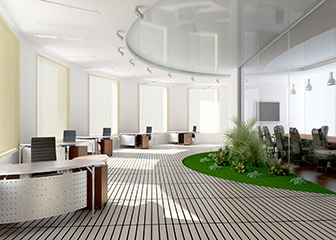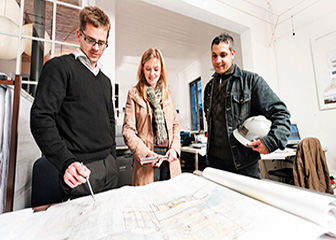
Interior designers make interior spaces functional, safe, and beautiful for almost every type of building.
Interior designers make interior spaces functional, safe, and beautiful for almost every type of building: offices, homes, airport terminals, shopping malls, and restaurants. They select and specify colors, finishes, fabrics, furniture, flooring and wallcoverings, lighting, and other materials to create useful and stylish interiors for buildings.
Duties
Interior designers typically do the following:
- Determine the client’s goals and requirements of the project
- Consider how the space will be used and how people will move through the space
- Sketch preliminary design plans
- Specify materials and furnishings, such as lighting, furniture, wallcoverings, flooring, equipment, and artwork
- Prepare final plans using computer applications
- Create a timeline for the interior design project and estimate project costs
- Oversee installing the design elements
- Visit after the project to ensure that the client is satisfied
- Search for and bid on new projects
Interior designers work closely with architects, structural engineers, and builders to determine how interior spaces will look and be furnished. Interior designers may read blueprints and must be aware of building codes and inspection regulations.
Although some sketches or drawings may be freehand, most interior designers use computer-aided design (CAD) software for the majority of their drawings.
Many designers specialize in particular types of buildings (homes, hospitals, or hotels), specific rooms (bathrooms or kitchens), or specific styles (early American or French Renaissance). Some designers work for home furnishings stores, providing design services to help customers choose materials and furnishings.
Some interior designers produce designs, plans, and drawings for construction and installation. This may include floor plans, lighting plans, or plans needed for building permits. Interior designers may draft the preliminary design into documents that could be as simple as sketches or as inclusive as construction documents, with schedules and attachments.
The following are examples of types of interior designers.
Sustainable designers use strategies to improve energy and water efficiencies and indoor air quality, and they specify environmentally preferable products such as bamboo or cork for floors. They may obtain certification in Leadership in Energy and Environmental Design (LEED) from the U.S. Green Building Council. Such certification indicates that a building or its interior space was designed with the use of sustainable concepts.
Universal designers renovate spaces to make them more accessible. Often, these designs are used to renovate spaces for elderly people or people with special needs; however, universal designs can benefit anyone. For example, an entry with no steps may be necessary for someone in a wheelchair, but it is also helpful for someone pushing a baby stroller.
Kitchen and bath designers specialize in kitchens and bathrooms and have expert knowledge of the variety of cabinets, fixtures, appliances, plumbing, and electrical solutions for these rooms.
Lighting designers focus on the effect of lighting for home, office, or public spaces. For example, lighting designers may work on stage productions, in gallery or museum spaces, or in health care facilities to find appropriate light fixtures and lighting effects for each space.
Closet designers design closet space for homes to maximize storage and increase orderliness. They work with both fixed structures and stand-alone storage systems.











